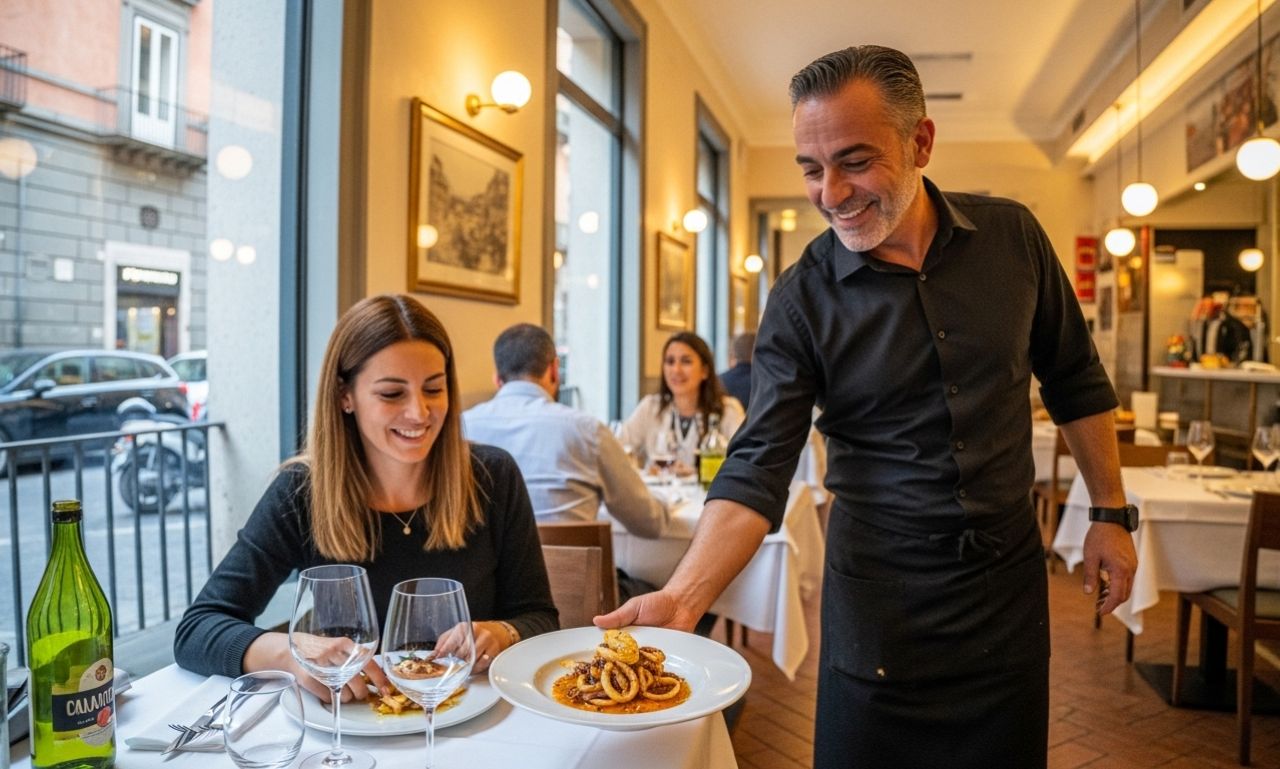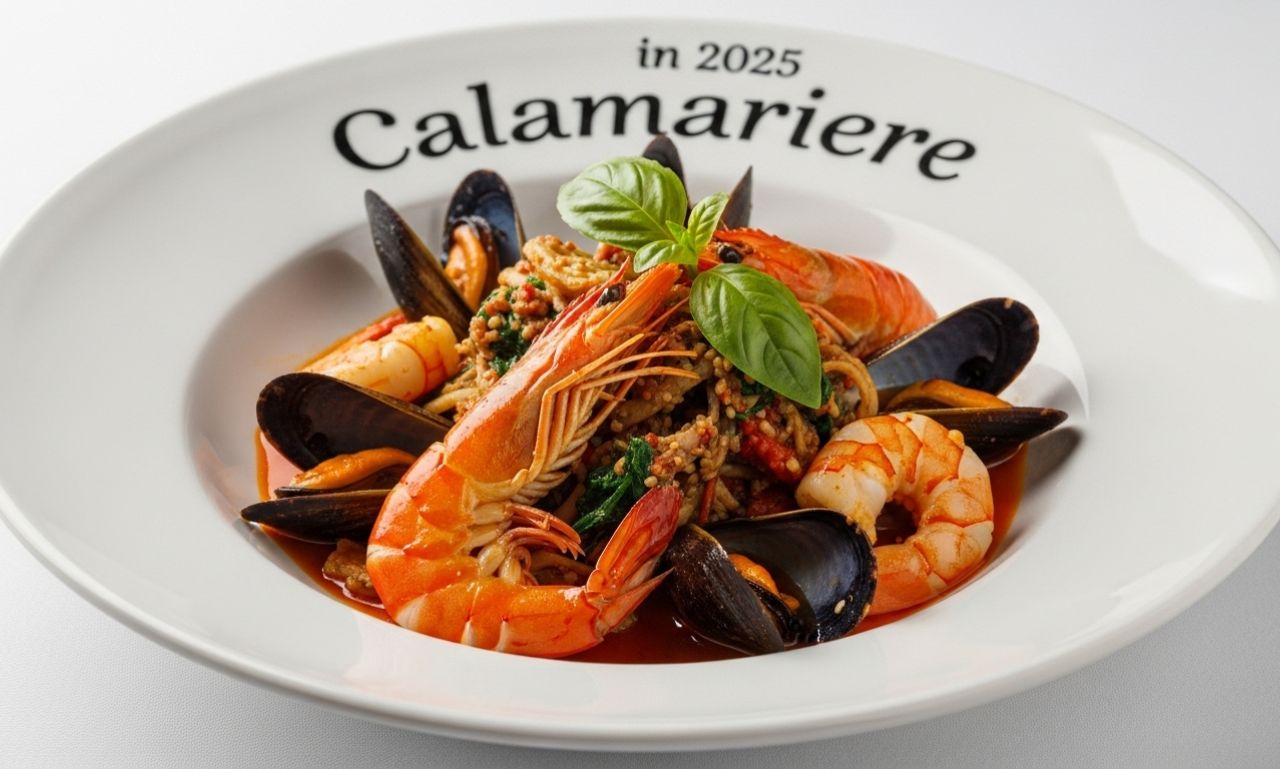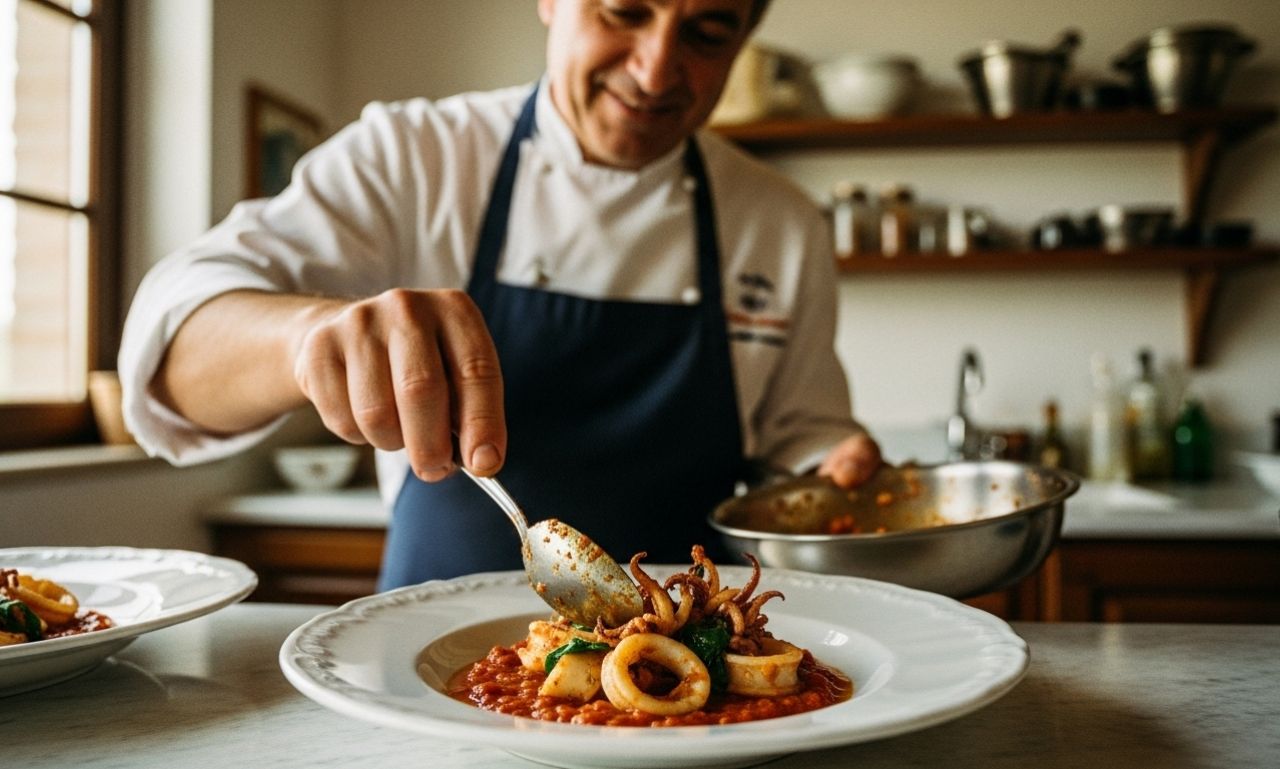Calamariere is refers to the seafood dish, specially featuring with calamari(squid) usually found in Italian Coastal Cuisine.
When it comes to Italian coastal cuisine, few dishes command attention like Calamariere. This seafood masterpiece, built around tender calamari (squid), has been a longtime favorite of food lovers worldwide. But in 2025, Calamariere has soared to new heights of popularity. What makes it the dish of the moment? Here are seven features that capture the essence of its modern appeal.
1. A Timeless Calamariere Tradition
Calamariere is deeply rooted in Italian coastal traditions, where fresh seafood and simple, bold flavors take center stage. This dish embodies the charm of sun-soaked villages along the Mediterranean, where recipes have been passed down for generations. For many, enjoying Calamariere feels like savoring a piece of history — a taste of authentic Italian heritage that’s impossible to replicate.
2. Creative Modern Twists
While the classic preparation still reigns supreme, chefs around the world are adding inventive new spins to Calamariere. From incorporating international spices like harissa or lemongrass to serving it on handmade artisanal flatbreads, the dish adapts beautifully to fresh interpretations. These modern innovations keep diners intrigued and coming back for more.
3. Commitment to Sustainability
With sustainability at the forefront of food trends, Calamariere stands out as an environmentally conscious choice, especially when made using responsibly sourced squid. Many chefs and restaurants are now working directly with ethical fisheries, ensuring that this dish supports marine conservation efforts. Diners in 2025 are more informed and eco-aware, making sustainablility a key reason for its newfound popularity.

4. Universally Loved Flavors
Calamariere is suitable for a variety of palates. Calamari’s subtle sweetness goes well with fresh herbs, garlic, and olive oil. This meal perfectly combines lightness and decadence, whether you grill it with a splash of lemon, cook it in a zesty tomato sauce, or fry it until golden. It’s no surprise that it has admirers from a variety of cultural backgrounds.
5. Healthy and Nutritious
Seafood is well known for its health benefits, and Calamariere is no exception. Squid is packed with lean protein, omega-3 fatty acids, and essential vitamins, making it an excellent choice for those seeking delicious meals without compromising their diet. The adaptability of the dish also allows for lighter, health-conscious variations, such as pairing it with roasted vegetables or serving it atop a salad.
6. Perfect for Sharing
One of the reasons Calamariere is so beloved in 2025 is how seamlessly it fits into social dining experiences. Whether it’s a bowl of crispy calamari rings at a tapas bar or a heaping plate served family-style at an Italian trattoria, this dish invites conversation, laughter, and connection. Food that brings people together will always have a special place in our hearts.
7. A Global Calamariere Ambassador
What once started as a signature dish of Italian coastal towns has now become a global phenomenon. From street-side vendors in Asia offering Calamariere to Michelin-starred chefs in North America reinventing it with avant-garde techniques, this dish transcends borders. Its ability to blend into various culinary landscapes ensures its continued relevance — and popularity — everywhere.
A Dish Worth Savoring in 2025
Calamariere is more than just a dish; it’s a celebration of tradition, creativity, and community. Its ability to evolve while staying true to its roots has cemented its place as a standout in the modern food scene. Whether you’re a passionate seafood lover or someone new to Italian cuisine, 2025 is the perfect time to indulge in this iconic dish and discover what makes it extraordinary.

Final Thoughts about Calamariere Seafood
Calamariere is a shining example of how food can be both a connection to our past and a symbol of innovation. Its timeless roots in Italian coastal cuisine offer a rich historical experience, while its modern adaptations keep it fresh and exciting for today’s palate. From its universally loved flavors to its celebrated role in sustainable dining, this seafood dish continues to inspire chefs and delight diners around the world. Whether shared among friends or enjoyed as a personal indulgence, Calamariere in 2025 remains a true culinary treasure. It’s a dish that captures tradition, evolves with the times, and reminds us of the joy of a meal well-enjoyed.
FAQs
1. What is Calamariere?
Calamariere is a dish that features calamari (squid) as its main ingredient, traditionally prepared in Italian coastal cuisine. You can serve it fried, grilled, or cooked in various styles, often seasoning it with Mediterranean flavors like olive oil, garlic, and fresh herbs.
2. Where does Calamariere originate?
Calamariere originates from the coastal regions of Italy, where fresh seafood has been a staple for centuries. It is deeply rooted in the traditions of Mediterranean cooking.
3. How is Calamari prepared in Calamariere?
The squid in Calamariere can be prepared in multiple ways. Common methods include frying it to crispy perfection, grilling it with a squeeze of lemon, or simmering it in a rich tomato-based sauce. The method often depends on regional variations or personal preferences.
4. What dietary preferences does Calamariere accommodate?
Calamariere features seafood as its main ingredient, making it suitable for pescatarians. Those avoiding gluten can easily adapt the dish by skipping breading or frying methods that involve wheat flour.
5. Can I make Calamari at home?
Absolutely! Fresh calamari is the key. With a few simple ingredients like olive oil, garlic, lemon, and herbs, you can recreate a classic Calamariere at home. Numerous recipes are available to suit your preferred style of preparation.
6. Why is Calamariere so popular worldwide?
Calamariere’s popularity stems from its adaptability, universal taste appeal, and connection to Italian culinary traditions. Its ability to blend with global flavors has made it a beloved dish in many countries beyond its origins.
